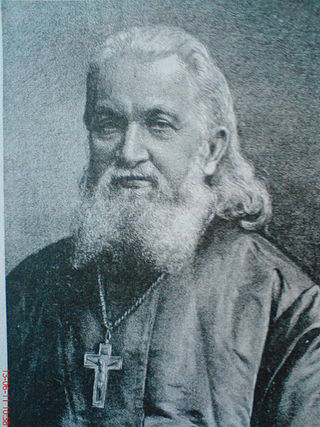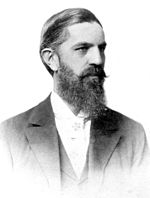Ruthenia is an exonym, originally used in Medieval Latin, as one of several terms for Kievan Rus'. It is also used to refer to the East Slavic and Eastern Orthodox regions of the Grand Duchy of Lithuania and the Kingdom of Poland, and later the Polish-Lithuanian Commonwealth, corresponding to what is now Belarus and Ukraine. Historically, the term was used to refer to all the territories of the East Slavs.

The history of Christianity in Ukraine dates back to the earliest centuries of the history of Christianity, to the Apostolic Age, with mission trips along the Black Sea and a legend of Andrew the Apostle even ascending the hills of Kiev. The first Christian community on territory of modern Ukraine is documented as early as the 9th century with the establishment of the Metropolitanate of Gothia, which was centered in the Crimean peninsula. However, on territory of the Old Rus in Kiev, Christianity became the dominant religion since its official acceptance in 989 by Vladimir the Great, who brought it from Byzantine Crimea and installed it as the state religion of medieval Kievan Rus (Ruthenia), with the metropolitan see in Kiev.

Galicia is a historical and geographic region spanning what is now southeastern Poland and western Ukraine, long part of the Polish–Lithuanian Commonwealth. It covers much of the other historic regions of Red Ruthenia and Lesser Poland.

Ternopil Oblast, also referred to as Ternopilshchyna or Ternopillia, is an oblast (province) of Ukraine. Its administrative center is Ternopil, through which flows the Seret, a tributary of the Dniester. Population: 1,021,713.

The Kingdom of Galicia and Lodomeria, also known as Austrian Galicia or colloquially Austrian Poland, was a constituent possession of the Habsburg monarchy in the historical region of Galicia in Eastern Europe. The crownland was established in 1772. The lands were annexed from the Polish-Lithuanian Commonwealth as part of the First Partition of Poland. In 1804 it became a crownland of the newly proclaimed Austrian Empire. From 1867 it was a crownland within the Cisleithanian or Austrian half of the dual monarchy of Austria-Hungary. It maintained a degree of provincial autonomy. Its status remained unchanged until the dissolution of the monarchy in 1918.
The Organisation of Ukrainian Nationalists was a Ukrainian nationalist organisation established in 1929 in Vienna, uniting the Ukrainian Military Organization with smaller, mainly youth, radical nationalist right-wing groups. The OUN was the largest and one of the most important far-right Ukrainian organizations operating in the interwar period on the territory of the Second Polish Republic.

Western Ukraine or West Ukraine refers to the western territories of Ukraine. There is no universally accepted definition of the territory's boundaries, but the contemporary Ukrainian administrative regions (oblasts) of Chernivtsi, Ivano-Frankivsk, Lviv, Ternopil and Zakarpattia are typically included. In addition, Volyn and Rivne Oblasts are also usually included. It is less common to include the Khmelnytskyi Oblasts in this category. It includes several historical regions such as Carpathian Ruthenia, Halychyna including Pokuttia, most of Volhynia, northern Bukovina and the Hertsa region, and Podolia. Western Ukraine is sometimes considered to include areas of eastern Volhynia, Podolia, and the small northern portion of Bessarabia.

Legion of Ukrainian Sich Riflemen was a Ukrainian unit within the Austro-Hungarian Army during the First World War.

The revolutions of 1848, known in some countries as the Springtime of the Peoples or the Springtime of Nations, were a series of revolutions throughout Europe over the course of more than one year, from 1848 to 1849. It remains the most widespread revolutionary wave in European history to date.
Galician Russophilia or Moscophilia was a cultural and political movement largely in the Kingdom of Galicia and Lodomeria, Austria-Hungary. This ideology emphasized that since the Eastern Slavic people of Galicia were descendants of the people of Kievan Rus' (Ruthenians), and followers of Eastern Christianity, they were thus a branch of the Russian people. The movement was part of the larger Pan-Slavism that was developing in the late 19th century. Russophilia was largely a backlash against Polonisation and Magyarisation that was largely blamed on the landlords and associated with Roman Catholicism.

The history of the Ukrainian minority in Poland dates back to the Late Middle Ages, preceding the 14th century Galicia–Volhynia Wars between Casimir III the Great of Poland, and Liubartas of Lithuania. Following the extinction of the Rurikid dynasty in 1323, the Polish Kingdom extended further east in 1340 to include the lands of Przemyśl and in 1366, Kamianets-Podilskyi. After the Union of Lublin (1569), principalities of Galicia and Western Volhynia became, what is known as, the Ruthenian Voivodeship of the Polish Crown, while the rest of Red Ruthenia together with Kyiv came under Lithuanian control. The Polish borders reached as far east as Zaporizhia, and Poltava.

Anatole Vakhnianyn, was a Ukrainian composer, political and cultural figure, teacher, and journalist.

Oleksander Barvinsky was an important western Ukrainian cultural figure and politician, a founder of the Christian Social Party in western Ukraine. He also was a member of the Austrian parliament, chaired the Shevchenko Scientific Society and held the post of secretary of education and religious affairs of the West Ukrainian National Republic. It was during his chairmanship that the Shevchenko Scientific Society was turned into a well established academy of sciences.
The Ukrainian Radical Party, (URP), founded in October 1890 as Ruthenian-Ukrainian Radical Party and based on the radical movement in western Ukraine dating from the 1870s, was the first modern Ukrainian political party with a defined program, mass following, and registered membership. It advocated socialism, increased rights for Ukrainian peasants, anti-clericalism and secularism.
On August 18, 1914, the Russian Empire invaded the Austrian Crownland of Galicia. On August 19, the Imperial Russian Army defeated the Austro-Hungarian Army, advanced 280–300 kilometers into the territory of Austria-Hungary and captured most of eastern Galicia. The principal city, Lemberg fell into Russian hands on September 3. Eastern Galicia had a population of approximately 4.8 million people.

The Eastern Catholic clergy of the Ukrainian Greek Catholic Church were a hereditary tight-knit social caste that dominated Ukrainian society in Western Ukraine from the late eighteenth until the mid-twentieth centuries, following the reforms instituted by Joseph II, Emperor of Austria. Because, like their Eastern Orthodox brethren, married men in the Ukrainian Catholic Church could become priests, they were able to establish "priestly dynasties", often associated with specific regions, for many generations. Numbering approximately 2,000-2,500 by the 19th century, priestly families tended to marry within their group, constituting a tight-knit hereditary caste. In the absence of a significant culturally and politically active native nobility, and enjoying a virtual monopoly on education and wealth within western Ukrainian society, the clergy came to form that group's native aristocracy. The clergy adopted Austria's role for them as bringers of culture and education to the Ukrainian countryside. Most Ukrainian social and political movements in Austrian-controlled territory emerged or were highly influenced by the clergy themselves or by their children. This influence was so great that western Ukrainians were accused by their Polish rivals of wanting to create a theocracy in western Ukraine. The central role played by the Ukrainian clergy or their children in western Ukrainian society would weaken somewhat at the end of the nineteenth century but would continue until the Soviet Union forcibly dissolved the Ukrainian Greek Catholic Church in Ukrainian territories in the mid-twentieth century.

Ivan Grigorievitch Naumovich, also romanized as Ivan Hryhorovych Naumovych, was a priest, member of parliament, writer, and major figure in the Russophile movement in western Ukraine. His article, A Glimpse into the Future, was considered the most important manifesto of Galician Russophilism.

Ivan Mykolaiovych Vahylevych was a Ukrainian Romantic poet, philologist, and ethnographer of the Galician revival in Western Ukraine.

The shlyakhta were a noble class of Ruthenians in what is now Western Ukraine that enjoyed certain legal and social privileges. Estimates of their numbers vary. According to one estimate, by the mid-19th century, there were approximately 32,000 Ukrainian nobles in the western Ukrainian territory of Galicia, over 25% of whom lived in 21 villages near the town of Sambir. They comprised less than 2% of the ethnic Ukrainian population. Other estimates place the number of nobles at 67,000 people at the end of the 18th century and 260,000 by the end of the 19th century, or approximately 6% of the ethnic Ukrainian population. The nobles tended to live in compact settlements either in villages populated mostly by nobles or in particular areas of larger villages.
With the arrival of the Hungarians into the heart of the Central European Plain around 899, Slavic tribes of Vistulans, White Croats, and Lendians found themselves under Hungarian rule. In 955 those areas north of the Carpathian Mountains constituted an autonomous part of the Duchy of Bohemia and remained so until around 972, when the first Polish territorial claims began to emerge. This area was mentioned in 981, when Vladimir the Great of Kievan Rus' claimed the area on his westward way. In the 11th century the area belonged to Poland, then reverted to Kievan Rus'. However, at the end of the 12th century the Hungarian claims to the principality turned up. Finally Casimir III of Poland annexed it in 1340–1349. Low Germans from Prussia and Middle Germany settled parts of northern and western Galicia from the 13th to 18th centuries, although the vast majority of the historic province remained independent from German and Austrian rule.














